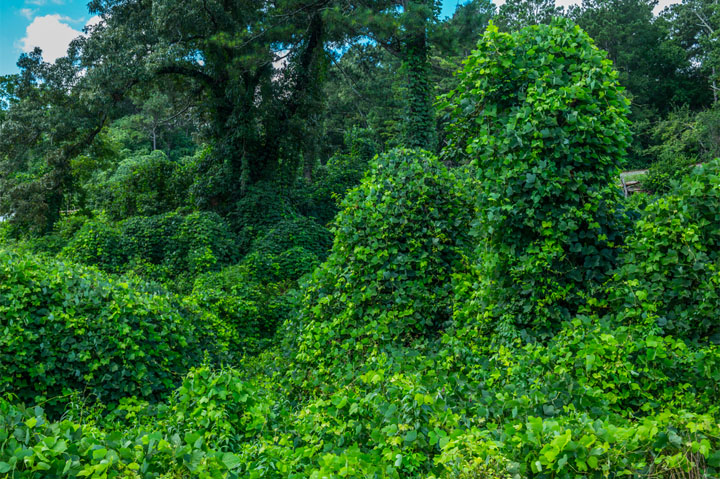Sustainability June 12, 2024
How an Aggressive, Invasive Plant Could Be Used for Biodegradable Food Packaging
Researchers at Clemson University are studying how “the vine that ate the South” could be used to develop eco-friendly food packaging.
Fast food companies and restaurants have been on the hunt for a greener food packaging option for years. Here in the U.S., it’s often just adapting to consumer buying habits as younger generations demand environmentalism from the businesses they buy from, but other times both domestically and abroad, it’s the result of changes in legislation.

Whatever the impetus, companies have been trying things like reusable packaging and drinkware (to mixed results), and sourcing food packaging that’s more easily biodegradable or recyclable.
A team of researchers at Clemson University is using a plant called kudzu, whose invasive and fast-growing nature earned it the nickname “The vine that ate the South,” to create new biodegradable food packaging.
Specifically, the team is using the cellulose in kudzu in the hopes that it could yield a polymer that would reduce the amount of plastic necessary for packaging.
“We want to show that food and agricultural byproducts that we normally see as waste and hard to discard could be used in food packaging, not only as normal protection but as packaging with multiple functionalities,” Zhaoxu Meng, assistant professor of mechanical engineering at Clemson and leader of the research team, told the Times and Democrat. “We also want to provide some momentum to show people that bio-based packaging has advantages over petroleum-based materials. We all want to aim for a better future.”
There have been other plant-based breakthroughs in packaging and printing. In the last couple of years, companies have been using black algae for printing ink on paper or packaging tape. In 2020, Chipotle debuted a line of T-shirts printed with ink made from avocado pits, and in 2022 Dole used ink made from fruit juice for signage.
Meng’s team at Clemson is using computer imaging and machine learning to visualize how biopolymers function together on the molecular level to figure out what nanocomposite materials would work best for food packaging. Meng says using computer modeling versus trial and error minimizes cost and time, but the team still plans to test materials in real life to see if results match what the computer spits out.
The research team reportedly plans to report its findings to the Sonoco Packaging Company, as well as other peer-reviewed journals and scientific conferences.
Should the study yield something usable, it could revolutionize the way we use invasive plants for good and make a big dent in how companies use environmental science in packaging.

Promo for the Planet is your destination for the latest news, biggest trends and best ideas to help build a more sustainable and socially-responsible industry.
